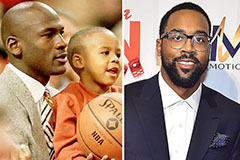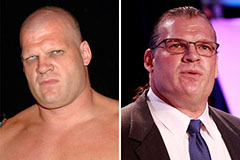During the exciting and typically unforeseeable world of professional wrestling, champion belts hold a importance that transcends simple decoration. They are the ultimate symbols of achievement, effort, and prominence within the settled circle. Amongst one of the most distinguished and traditionally abundant titles in the market are the WWF Championship Belts, a family tree that goes back to the really structure of what is currently called copyright. These belts have not only stood for the peak of wrestling expertise however have additionally developed in layout and significance alongside the promo itself, becoming renowned artefacts cherished by fans worldwide.
The trip of the WWF Champion started in 1963 when the Globe Wide Fumbling Federation (WWWF), the precursor to the WWF and at some point copyright, was developed. Complying with a conflict with the National Wrestling Alliance (NWA), Northeast promoters developed their very own banner and recognized Pal Rogers as their inaugural WWWF World Heavyweight Champion on April 25, 1963. Surprisingly, some accounts recommend that Rogers was awarded the WWWF title belt, which was an old United States title he already possessed, as a placeholder up until a brand-new design could be produced.
Throughout the WWWF era (1963-1979), the champion belt undertook several models, frequently accompanying the periods of its most famous holders. Bruno Sammartino, the fabulous "Living Legend," held the title for an impressive consolidated overall of over 4,000 days across 2 regimes. Throughout his time, various layouts were seen, consisting of one shaped like the adjoining United States, highlighting the local roots of the promo. Later, a extra traditional style including two wrestlers grappling above an eagle came to be synonymous with Sammartino's 2nd power and the champs who followed him, such as "Superstar" Billy Graham and Bob Backlund.
The year 1979 noted a considerable shift as the WWWF officially became the Globe Wrestling Federation (WWF). This rebranding would ultimately result in adjustments in the championship's name and appearance. In the very early 1980s, as the WWF began its climb in the direction of coming to be a international phenomenon, a bigger, green leather belt with huge gold plates was introduced. This layout included a wrestler holding a champion with the world behind him, emphatically declaring the holder as the "World Champion." Notably, the side plates of this version noted the family tree of previous champs, a tradition that acknowledged the title's abundant history. This legendary belt was held by figures like Bob Backlund, The Iron Sheik, and, the majority of notoriously, Hulk Hogan, who brought it throughout the "Hulkamania" era, a period of unmatched mainstream success for the WWF.
The mid to late 1980s saw the intro of what lots of think about one of one of the most beloved layouts in wrestling background: the "Winged Eagle" champion. Debuting in early 1988, with Hulk Hogan as the initial holder, this layout featured a magnificent eagle with outstretched wings as the focal point, flanked by smaller side plates. The "Winged Eagle" belt came to be a sign of quality throughout the late 1980s "Rock 'n' Fumbling" age and wwf belts well into the 1990s "New Generation" era. Renowned champs such as Randy Savage, The Ultimate Warrior, Bret "Hitman" Hart, and Shawn Michaels all proudly held this version of the title. The "Winged Eagle" even transitioned right into the very early years of the "Attitude Period," with " Rock Cold" Steve Austin being the last full-time champ to use it.
The " Perspective Period," which exploded in popularity in the late 1990s, brought with it a extra aggressive and edgy visual, reflected in the WWF Champion layout. In late 1998, the " Large Eagle" belt was presented. This style featured a larger central plate with a prominent WWF "scratch" logo, signifying the business's modern identity. While maintaining a sense of status, the "Big Eagle" layout aligned with the defiant spirit of the era and was held by famous figures like " Rock Cold" Steve Austin, The Rock, and Mick Foley.
As the calendar turned to the brand-new millennium, the WWF went through one more improvement, coming to be Globe Wrestling Home entertainment (copyright) in 2002. This age additionally saw the marriage of the WWF Champion with the copyright Championship ( gotten after copyright's purchase of Entire world Champion Wrestling). The "Undisputed" championship was stood for by both the " Large Eagle" and the copyright's "Big Gold Belt" being held simultaneously. This marriage was temporary, as the re-established copyright split its roster right into 2 brands, Raw and copyright, bring about the production of a new World Heavyweight Champion for the Raw brand, while the original title became special to copyright and was relabelled the copyright Champion.
Since then, the copyright Championship has remained to advance in name and design. In the mid-2000s, John Cena introduced the " Rewriter" belt, a controversial but without a doubt attention-grabbing layout including a big copyright logo that could rotate. This reflected Cena's identity and interest a younger target market. Subsequent designs have intended to mix contemporary looks with a sense of history and eminence.
In recent years, especially considering that April 2022, the copyright Champion has actually been safeguarded alongside the copyright Universal Champion as the Indisputable copyright Universal Champion, though both titles maintained their individual family trees. Originally stood for by both belts, a single, unified style ultimately arised, decorated with black diamonds and the holder's custom-made side plates. Since April 13, 2025, Cody Rhodes holds the Undisputed copyright Championship, having combined it after beating Roman Powers at copyright XL in 2024. Following his triumph, copyright formally renamed the unified title to the Undeniable copyright Champion.
The WWF Champion Belts, throughout their numerous models, have served as more than just rewards. They stand for heritages, periods, and the numerous tales told within the fumbling ring. Each design is intrinsically linked to the champs who held them and the durations they specified. From the traditional grandeur of the "Winged Eagle" to the strong declaration of the "Spinner" and the existing unified design, these belts are substantial pieces of wrestling history, promptly recognizable symbols of greatness worldwide of professional fumbling. Their evolution mirrors the advancement of the firm itself, continuously adjusting to the times while for life recognizing the abundant practice whereupon they were developed.
 Destiny’s Child Then & Now!
Destiny’s Child Then & Now! Mike Vitar Then & Now!
Mike Vitar Then & Now! Marcus Jordan Then & Now!
Marcus Jordan Then & Now! Kane Then & Now!
Kane Then & Now! Sarah Michelle Gellar Then & Now!
Sarah Michelle Gellar Then & Now!